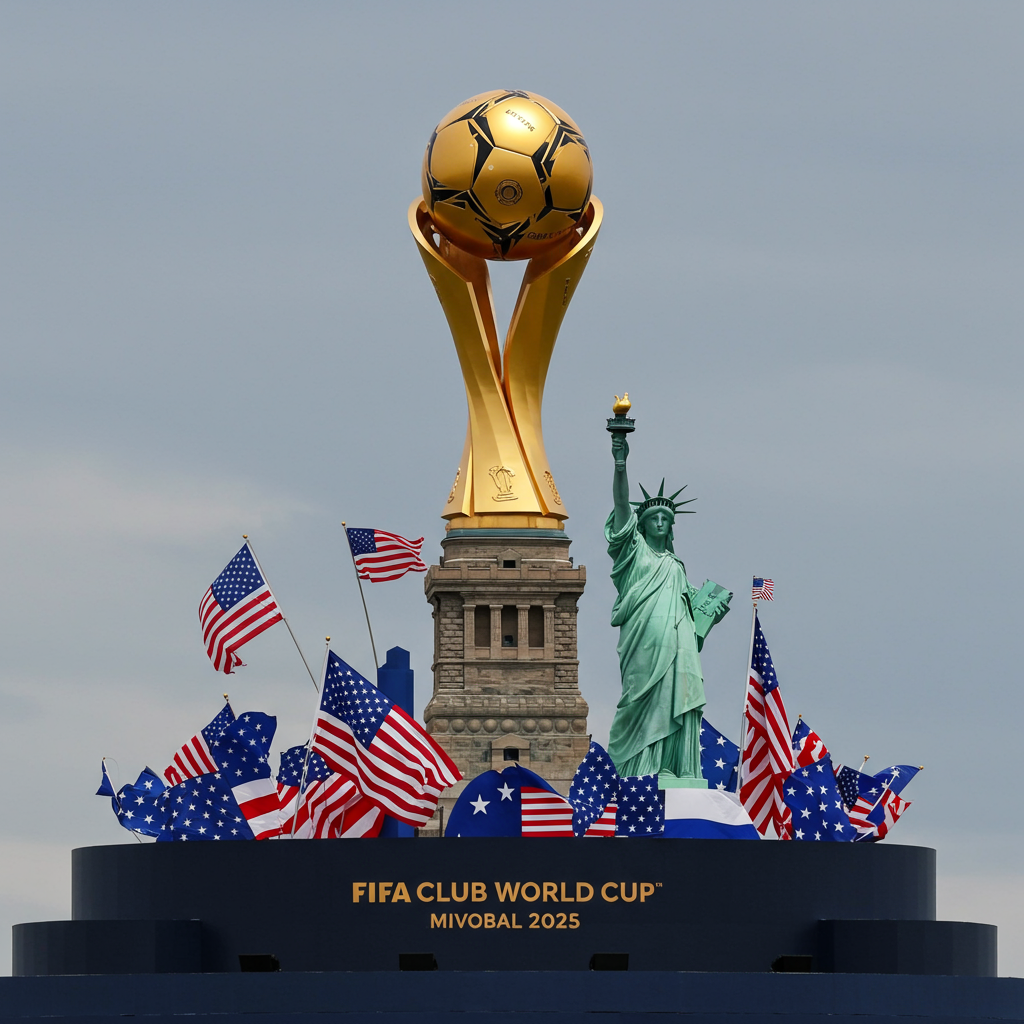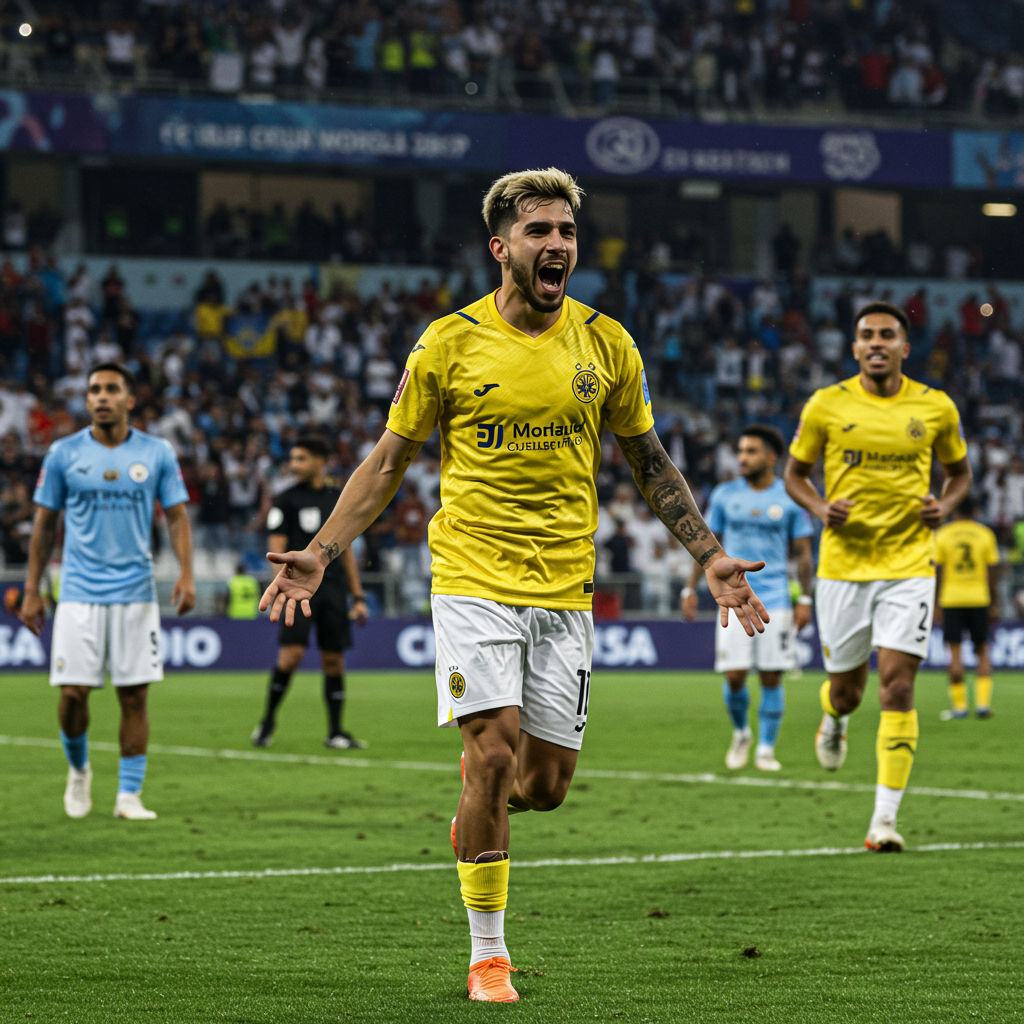A new era in global club soccer is kicking off in the United States. The highly anticipated 2025 FIFA Club World Cup, running from June 14 to July 13, 2025, marks a revolutionary moment for the sport, introducing an expanded format that organizers hope will redefine the landscape of international club competition. With 32 elite teams converging across 11 U.S. cities, this tournament is FIFA’s boldest venture yet, promising unprecedented financial rewards and high-stakes matches.
Set to launch from the center circle at Miami’s Hard Rock Stadium, the USA makes history as the first host of this revamped tournament. Much like the national team World Cup format used from 1998 to 2022, the competition features eight groups of four teams. The top two from each group will advance to a single-elimination knockout phase, starting with the Round of 16. A total of 63 matches will be played over the month-long spectacle.
The Contenders: A Global Gathering
The tournament brings together a diverse lineup of clubs qualified based primarily on their success in recent continental championships. The 32-team field includes:
12 clubs from Europe (UEFA): Featuring powerhouses like Real Madrid, Atlético Madrid, Inter Milan, Juventus, Manchester City, Chelsea, Paris Saint-Germain, and Bayern Munich.
6 from South America (CONMEBOL): Including giants such as Boca Juniors, Flamengo, River Plate, and Palmeiras.
5 from North & Central America (CONCACAF): With U.S. representatives LAFC, Seattle Sounders, and Lionel Messi’s Inter Miami qualifying as host nation participants alongside teams like Pachuca and Monterrey.
4 from Asia (AFC)
4 from Africa (CAF)
1 from Oceania (OFC): Represented by Auckland City from New Zealand.
This mix guarantees intriguing matchups, allowing fans to see global stars from different leagues face off on the same stage.
Big Bets and Financial Windfalls
FIFA is projecting significant financial success for the event, citing its April financial report forecasting up to $21.1 billion in global GDP impact, with $9.6 billion in the U.S. alone. The tournament boasts a massive $1 billion total prize pool, providing a substantial financial boost, particularly for clubs outside the traditional European elite. The champion stands to take home a minimum of $40 million in prize money just for the final win, in addition to previous earnings, potentially totalling over $125 million depending on performance through the group stage ($2 million per win, $1 million per draw), Round of 16 ($7.5 million), Quarterfinals ($13.1 million), and Semifinals ($21 million). The runner-up earns $30 million in the final.
Broadcasting rights have been secured by DAZN, which plans to stream all 63 matches globally for free with registration. While FIFA reportedly earned around $1.05 billion from this deal, questions linger about stadium attendance. Despite estimates of 3.7 million total attendees, ticket availability remained high just days before kickoff, and initial dynamic pricing led to significant drops in some prices, including the opening match featuring Inter Miami. This suggests initial high prices may have deterred some fans, combined with the challenge of motivating broad attendance for individual clubs compared to national teams.
The Competitive Divide
While the tournament offers a thrilling global stage, the competitive gap between continents, particularly Europe and the rest, remains a significant talking point. The traditional “David vs. Goliath” narrative of the old Intercontinental Cup, pitting the European and South American champions, is now amplified. For a non-European team to lift the trophy, they’ll likely need to overcome multiple top European sides.
Squad valuations starkly highlight this disparity. According to Transfermarkt, teams like Real Madrid ($1.5 billion) and PSG (over $1 billion) dwarf even the most valuable South American sides like Palmeiras ($288 million) or the recent Copa Libertadores champion Botafogo ($183 million). European clubs also benefit from attracting and retaining top global talent, often signing young stars from other continents early in their careers, as seen with River Plate’s Franco Mastantuono joining Real Madrid. As Inter Milan executive Javier Zanetti noted, the tournament is “the first cup played this way” and could help “level the playing field,” but the on-paper advantage for European clubs is clear.
Player Welfare Concerns
The addition of a demanding, month-long tournament to an already packed global soccer calendar raises concerns about player fatigue and potential injuries, particularly for stars from top clubs who already play extensive league, domestic cup, and continental schedules, plus international duties. Legendary striker Ronaldo Nazário has voiced the need for dialogue to find solutions for the calendar, emphasizing the high demands on players. FIFA President Gianni Infantino maintains the organization is “very careful about the calendar and about the health of the players,” suggesting players prefer playing to training. However, the sheer volume of high-intensity matches remains a point of contention.
Qualification Questions
Some debate exists around the qualification system for this inaugural expanded edition. While rewarding past success, it means teams like Chelsea qualified as 2021 Champions League winners despite their squad changing considerably and not being top domestic contenders in recent seasons. This contrasts with in-form teams like Liverpool or FC Barcelona, who did not qualify.
How to Watch the Global Showdown
Fans around the world have multiple options to catch the action:
DAZN: All 63 matches will be available to stream live and for free globally by registering on the DAZN platform.
Television: Select games will also be broadcast on traditional U.S. television channels including TNT, TBS, and truTV.
- Streaming Services: Access to TNT, TBS, and truTV is available through various live TV streaming platforms such as Hulu + Live TV, DirecTV Stream, Max (with the Bleacher Report add-on), and others.
- krdo.com
- kion546.com
- sports.yahoo.com
- kion546.com
- sports.yahoo.com
Beyond the National Teams: A Club Legacy
It’s important to distinguish the FIFA Club World Cup from the FIFA World Cup, which features national teams. The Club World Cup historically brought together continental champions, but this expanded version elevates it to a major club tournament. While the national team World Cup remains the pinnacle for countries, the Club World Cup offers the chance for clubs to claim the title of world’s best. Since its inception in 2000, the trophy has been predominantly claimed by European sides, with Real Madrid leading with 5 titles, followed by Barcelona (3), and Bayern Munich and Corinthians (2 each).
Despite the challenges and questions, the 2025 FIFA Club World Cup represents a significant evolution in global soccer. FIFA’s ambitious gamble is undeniably large and potentially very attractive. Whether it fundamentally changes the club game or simply adds another prestigious trophy to the calendar remains to be seen, but for now, the stage is set for a month of intense, globe-spanning club competition.




